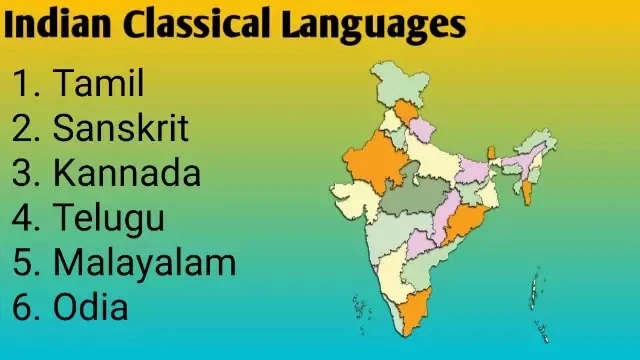In the year 2004, it was decided by the Government of India to declare Indian Languages meeting certain requirements as “Classical language” and Tamil was declared as a Classical Language by the Government of India in June 2004.
[caption class="snax-figure" align="aligncenter" width="662"] [/caption]
[/caption]
Sanskrit is already having a special status in India under Article 351 and Sanskrit was declared as a classical language in the year 2005.
Classification of Indian Languages
The Indian languages belong to major 6 language families:
- Indo-Aryan Group
- Dravidian Group
- Sino-Tibetian Group
- Negroid
- Austic (Mon-Khmer)
- Others
Indo-Aryan and Dravidian languages are used by a large majority of India’s population. The language families divide roughly into geographic groups.
- Languages of the Indo-Aryan group are spoken mainly in Northern and Central regions.
- The languages of Southern India are mainly of the Dravidian group.
- Some ethnic groups in Assam and other parts of Eastern India speak languages of Mon-Khmer group.
- People in the Northern Himalayan region and near the Burmese border speak Sino-Tibetan languages.
- Speakers of 54 different languages of Indo-Aryan family make up about three-quarters of India’s population.
- Twenty Dravidian languages are spoken by nearly a quarter of the people.
- Speakers of 20 Mon-Khmer language and 98 Sino-Tibetan languages together make up about 2 per cent of the population.
Criteria for Classical languages in India
In the year 2006, the Government of India declared that the following are the criteria to determine the eligibility of languages to be considered and declared as classical languages:
- High antiquity of its early texts/recorded history over a period of 1500-2000 years.
- A body of ancient literature/ texts, which is considered a valuable heritage by generations of speakers.
- The literary tradition is original and not borrowed from another speech community.
- The classical language and literature being distinct from modern, there may also be a discontinuity between the classical language and its later forms or its offshoots.
Currently six languages enjoy the status of Classical languages in India:
- Tamil (2004)
- Sanskrit (2005)
- Kannada and Telegu (2008)
- Malayalam (2013)
- Odiya (2014)
What are the benefits enjoyed by the Classical languages?
Once the status of Classical language is given to the language, then the following benefits are accredited to the language:
- Two major annual international awards for scholars of eminence in classical Indian languages.
- A Centre of Excellence for studies in Classical Languages is set up.
- The University Grants Commission is requested to create, to start with at least in the Central Universities, a certain number of Professional Chairs for the Classical Languages so declared.
Click here to read more: E learning Platform in India



